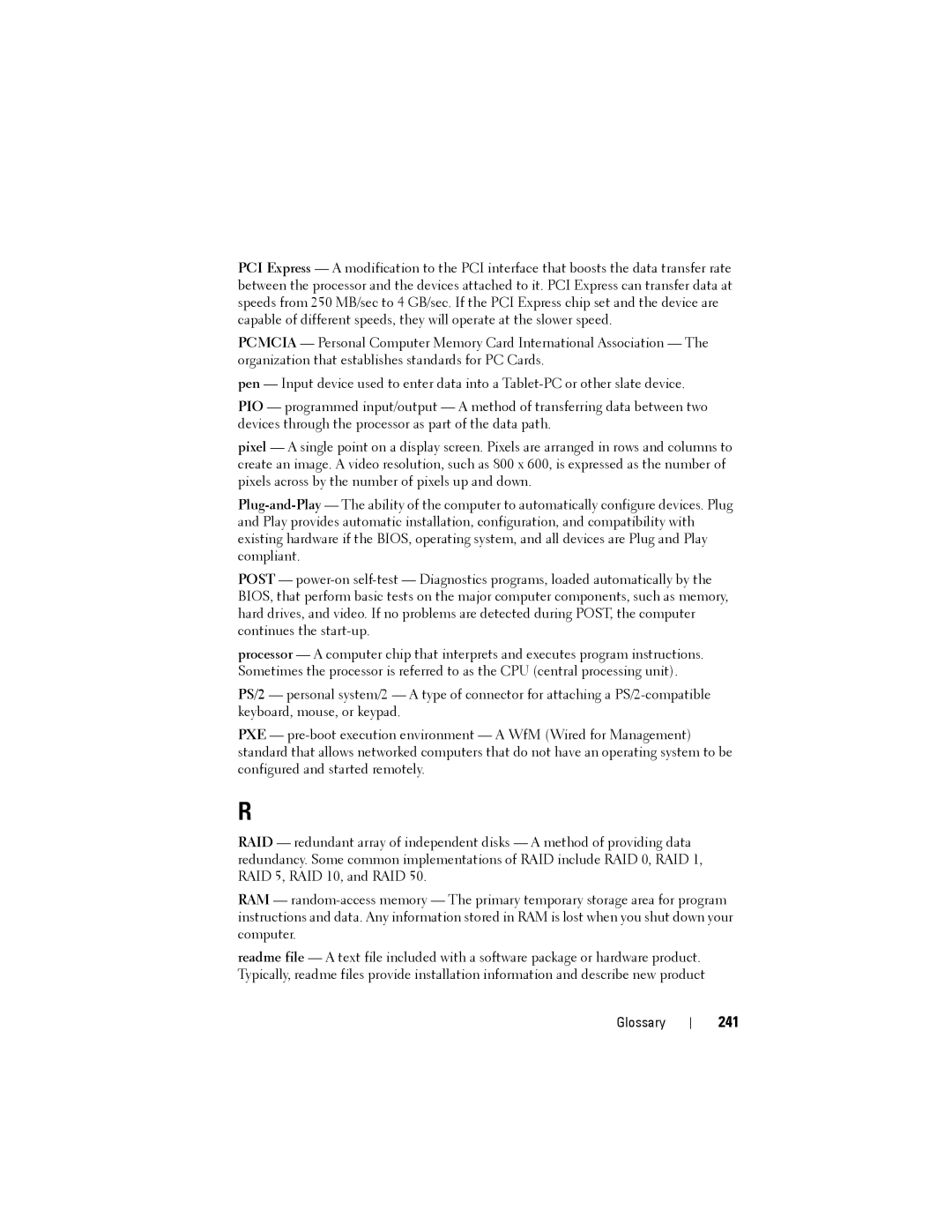PCI Express — A modification to the PCI interface that boosts the data transfer rate between the processor and the devices attached to it. PCI Express can transfer data at speeds from 250 MB/sec to 4 GB/sec. If the PCI Express chip set and the device are capable of different speeds, they will operate at the slower speed.
PCMCIA — Personal Computer Memory Card International Association — The organization that establishes standards for PC Cards.
pen — Input device used to enter data into a
PIO — programmed input/output — A method of transferring data between two devices through the processor as part of the data path.
pixel — A single point on a display screen. Pixels are arranged in rows and columns to create an image. A video resolution, such as 800 x 600, is expressed as the number of pixels across by the number of pixels up and down.
POST —
processor — A computer chip that interprets and executes program instructions. Sometimes the processor is referred to as the CPU (central processing unit).
PS/2 — personal system/2 — A type of connector for attaching a
PXE —
R
RAID — redundant array of independent disks — A method of providing data redundancy. Some common implementations of RAID include RAID 0, RAID 1, RAID 5, RAID 10, and RAID 50.
RAM —
readme file — A text file included with a software package or hardware product. Typically, readme files provide installation information and describe new product
Glossary
